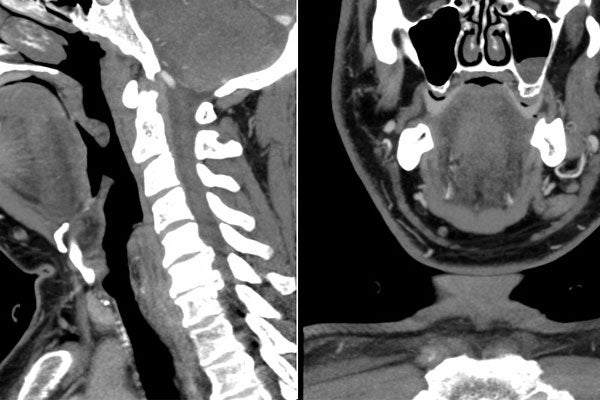
U of T medical residents help Ontario coroner's office
Published: April 14, 2015
Conducting, observing and assisting autopsies, visiting crime scenes and observing court testimony – those are just a few of the challenges faced by University of Toronto medical residents this year.
It's the first time it's been done anywhere in Canada, organizers say.
This year, the Ontario Forensic Pathology Unit and the Faculty of Medicine’s departments of medical imaging and laboratory medicine and pathobiology worked together to help residents gain forensic radiology experience. And, as the diagnostic radiology residents rotated through the provincial forensic pathology unit, they worked with forensic pathologists to analyze medical images (CT and MRI) to help determine better approaches for autopsies.
Ontario's Provincial Forensic Pathology Unit conducts post-mortem examinations on people who have died suddenly and unexpectedly. Since moving to a new facility in 2013, the unit has integrated advanced tools such as full-body CT scans and MRIs into their practice. Forensic pathologists use these studies to plan their postmortem examinations and to provide evidence during criminal proceedings.
While forensic pathologists are experts at performing autopsies and determining how and why people die, most of them don’t have formal radiology training.
That’s where the radiology residents come in.
“Radiology residents really benefit from participating in this rotation. They get to be medical imaging consultants, improve their communications skills and work collaboratively in a high-stakes environment,” says Dr. Eric Bartlett, program director for the Diagnostic Radiology Residency Program and an assistant professor in the department of medical imaging. “Their medical expert skills are tested and they’re rewarded with pathology correlation of the imaging findings.”
Forensic pathologists, residents, fellows and other trainees at the Forensic Pathology Unit gain valuable knowledge in medical imaging from the diagnostic radiology residents who help pathologists decide how best to conduct autopsies based on the imagery.
The residents, on the other hand, gain exposure to a range of trauma and untreated diseases across all age groups and expertise in post-mortem radiology – a field that can be very different from radiology for the living. The residents also see pathology in real time shortly after making a radiologic diagnosis, something that is impossible in a clinical setting.
“We’re really excited to host diagnostic radiology residents at our facility. We believe the experience will promote interdisciplinary learning, and develop relationships between the two diagnostic specialties for years to come,” says Professor Michael Pickup, a forensic pathologist and post-mortem imaging lead at the Ontario Forensic Pathology Service. He is also an assistant professor in the department of laboratory medicine and pathobiology.
Bartlett says he hopes to expand the rotation to allow all residents to rotate through forensic radiology during their residency.



